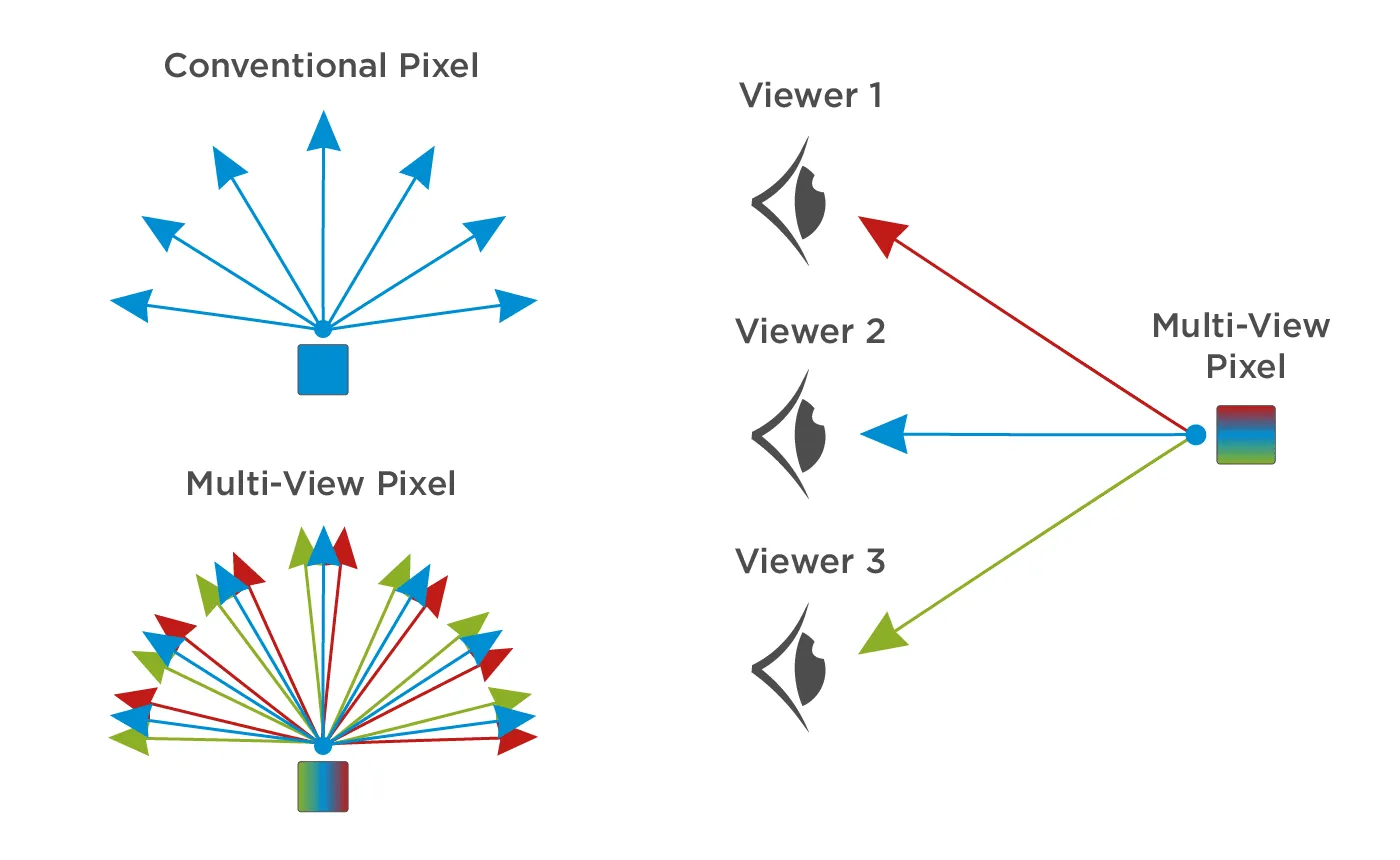Parallel Reality
Every now and then a piece of tech comes along that makes me go; WOW! … what? … whaooaa! … wtf! … how the?
The latest of these moments was when I first heard about Delta Airlines plans to test a new digital display board at Detroit’s Metro Airport that shows personalised flight information to different users looking at the same screen at the same time. No headset, smartphone augmented reality or special technology on behalf of the user required.
The technology behind this capability, called parallel reality has been created by US based Misapplied Sciences, who have been quietly working on the technology since 2014. And this is not some Blade Runner-esque vision of the future. Delta unveiled it at last month’s Consumer Electronics Show (CES), the world biggest tech conference in Las Vegas.
3 minute read
8th December 2023
So how does it work?

Multi-view pixels allow different content to be delivered in different directions
Parallel reality uses special “multi-view” pixels that emit different light colours in thousands of different directions. So for two people looking at the same pixel one stood to the right might see a blue light and one stood to the left a red one. Misapplied Science’s software then coordinates all the pixels that make up the display together to provide different images from different stand points and as a result create different personalised messages for each individual.
So far so clever.
So how does the software know who you are and where you are in proximity to the display?
When you scan your boarding pass you are associated with your flight info – not by facial recognition, thought this will likely come, but as a ‘discrete blob’ in the tech’s camera. As you move around close to the parallel-reality display the camera tracks your position so the display can point your personalised messaging to your precise location.
Although Delta are hoping to roll this out on a single display in Detroit later this year, there are still some limitations. Currently, the display only supports 256 colours limiting the quality of photos and videos, the displays are currently limited to 100 concurrent users and you need to stand a minimum of 15 feet away for the targeting to be truly effective. Although with each iteration Misapplied Science is improving the technology and believe a time where the system can support over a thousand concurrent users is not far away.
Both Delta and Misapplied Science are keen to alleviate the obvious privacy concerns. In the case of Delta by making this an opt-in system and insisting no information will be shared and Misapplied Science by stating they have created a “a display technology, not a new means of monitoring people”. However, it’s not unreasonable to speculate about as-yet-unknown implementations of parallel reality and the privacy concerns that might follow. But that is a discussion for another time, for now lets just marvel at a truly innovative piece of technology.
Privacy concerns aside the potential applications for this kind of technology are huge and encompass everything from traffic signage, targeted display advertising, retail, through enhancing festival, theme-park and sports experiences. And it’s all coming a lot sooner than you think!

